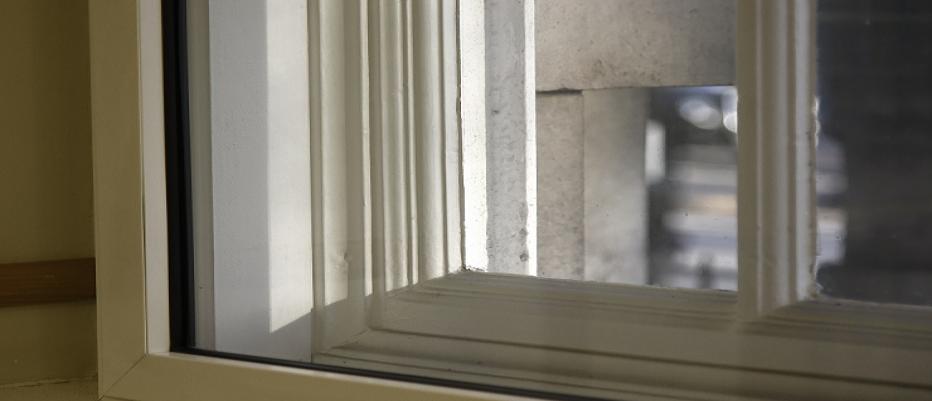Introduction
In situations where it is considered necessary to introduce blast mitigation into an existing building, and it is not practical or affordable to replace all the windows with laminated glass, consideration should be given to the use of window retrofit options such as:
- anti-shatter film (ASF) and bomb blast net curtains (BBNC)
- secondary glazing
Their use in existing buildings will reduce the potential of flying glass entering the building following an explosion.
Additional advice should be sought from a blast engineer from the Register of Security Engineers and Specialists (RSES) if a higher level of risk from improvised explosive devices (IEDs) has been identified in relation to the building you are concerned with. In this case a more detailed blast protection strategy will need to be developed to bring down the higher levels of risk.

Key features
Window retrofits are applied to the internal face of existing glass and are typically used on annealed glass. The main considerations when selecting ASF and BBNC or secondary glazing on the internal side of a window are:
- ASF and BBNC should be considered for normal window frames as a retrofit for existing annealed glass, only where the windows cannot be replaced. ASF is available in varying thicknesses and the correct thickness should be selected for the glass thickness.
- ASF can be used as a mitigation option on its own, however BBNC should always be used with ASF applied to the glass.
- secondary glazing should be considered in situations where a greater level of blast resistance is required, and it is not practical to replace the window with laminated glass in enhanced frames. This option may require an additional structural support within the existing building to install it.
Blast resistance
The use of laminated glass is recommended where specially designed protection measures are required, such as for new buildings or when windows are being replaced. Retrofit options should only be considered where this is not viable.
ASF and BBNC
- this option approximately halves the stand-off range at which a hazard would occur from flying annealed glass shards
- ASF holds the broken glass together and BBNC will stop the glass and ASF being projected further into the building
- the mitigation provided by ASF is dependent on the size of the window, the thickness and type of glass, the thickness and tear resistance of the ASF product and the quality of its application
- peel adhesion testing should be used to test the effectiveness of the ASF
- ASF is not a permanent solution and needs to be replaced every 10 to 12 years
Secondary glazing
- these window systems are designed to respond to a blast by preventing the external glazing from entering the building and are either fixed within the window reveal or, where there is a reduced wall thickness, to the inner face of the wall
The guidance notes below detail several factors and a number of limitations that must be taken into account when considering the use of retrofit options.
Guidance
- Specifying anti-shatter film as a blast mitigation measure (Daylight application)23-09-2016Download
- Use of Anti-shatter film (ASF) and bomb blast net curtains (BBNC)26-09-2016Download
- Installation of bomb blast net curtains (BBNC)26-09-2016Download
- Peel adhesion testing and assessment of anti-shatter film (ASF)26-09-2016Download